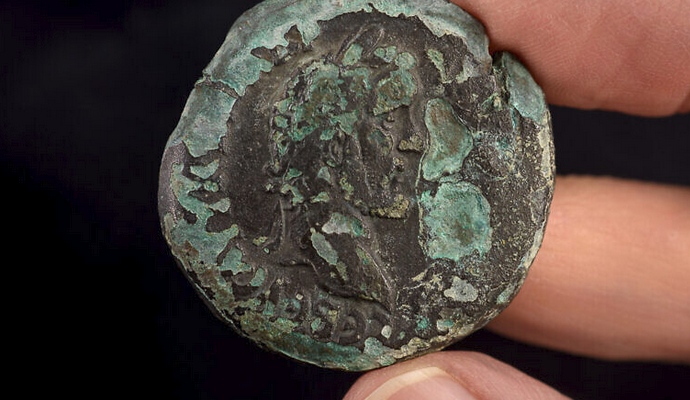A rare bronze coin dating back almost 2,000 years was discovered off of Israel’s coast.
By United with Israel Staff
An 1,850-year-old bronze coin was recently discovered in the Mediterranean Sea, near Haifa, the Israel Antiquities Authority (IAA) announced on Monday.
One side of the coin depicts Roman Emperor Antoninus Pius, who reigned from 138 to 161 CE, the time frame in which the IAA said the coin was minted.
According to the online Jewish Encyclopedia, “The reign of this just and humane emperor came like a blessing to the Jews, particularly to those of [the Land of Israel]. The religious persecutions of Hadrian had devastated the country, depopulated the cities, and made the intellectual development of the Jews impossible.”
The source notes that at the outset of Antoninus Pius’ tenure as head of the Roman Empire, the Jewish people sent a delegation to Rome headed by Rabbi Judah ben Shamu’a “to negotiate for improvement in their condition.”
Among the emperor’s overtures to the Jews was permitting them to bury Jewish soldiers and martyrs killed in battle against the Romans. He also repealed the edicts of Hadrian, “which had prevented the Jews from exercising their religion,” on the condition that they should not receive converts. Hadrian had prohibited Jews from performing the mitzvah of brit milah.
Gradually, Jews who fled the Land of Israel to escape persecution under Hadrian’s rule returned to home.
“The intellectual stagnation of the Jewish people came to an end; and the disciples of [Rabbi] Akiva founded a new center of Jewish culture at Usha,” where Rabbi Shimon ben Gamaliel II also resided.
Commenting on the coin, IAA Unit Director Jacob Sharvit said, “It is a rare addition to the National Treasures collection.”
“These finds, which were lost at sea and disappeared from sight for hundreds and thousands of years, have been remarkably well preserved; some are extremely rare and their discovery completes parts of the historical puzzle of the country’s past,” he added.
IAA numismatics expert Lior Sandberg identified the coin as one in a series of 13, 12 of which depict signs of the zodiac, with the thirteenth showing the entire zodiac wheel.
Sandberg dated the coin to 144/145 CE, based on an inscription referring to the eighth year of Antoninus Pius’s reign, which was referred to as “Pax Romana” (Roman peace) due to its relative serenity.
